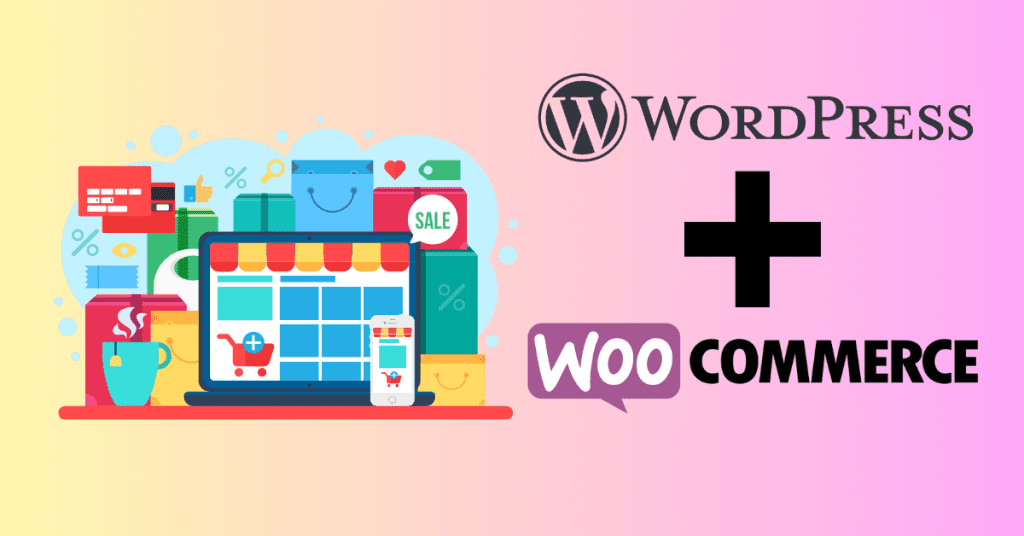Now that everything is ready with your WordPress Blog, it’s time to start monetizing your Blog. Here’s a detailed guide to help you put in place a monetization strategy for your WordPress Blog. It involves ways you can make passive income, as well as active income, through blogging.

At the end of this guide, you’ll learn the most common and profitable ways to earn money off WordPress Blogs. You will be able to identify what income streams are best for you. And then, able to see a sample roadmap towards making a full-time income from blogging. Finally, understand how to earn yourself a full-time income off your very own WordPress Blog.
Ready? Let’s begin.
If you haven’t got a blog yet, you can start by using Self-hosted WordPress in Bluehost. Complete guide available here.
1. Affiliate marketing – WordPress Blog Monetization

Affiliate marketing is a popular way to monetize a WordPress Blog. It allows you to earn a commission by promoting other people’s products or services. With affiliate marketing, you don’t need to create your own product or service, you are just promoting another’s products. The product owner will handle the product creation, maintenance and support.
And your job would be promoting it and earning commissions for successful sales. There will not be much extra cost involved after you establish your blogs and have traffics coming in.
You are leveraging your authority to promote others’ products.
To start making money with affiliate marketing on your blog, you should choose the affiliate programs to join.
Choose affiliate programs relevant to your WordPress Blog
To be successful with affiliate marketing, it’s important to choose affiliate programs that are relevant to your blog’s content and audience. This will make it easier for you to promote the products and services. It will be more appealing to your readers. You can find affiliate programs by searching for them online or by using an affiliate network like Commission Junction or Amazon Associates.
Use your unique referral links in Your WordPress Blog
When you sign up for an affiliate program, you’ll be given a unique referral link to use when promoting products. This link will track any sales that you referred, and you’ll earn a commission on those sales. It’s important to use your referral links consistently. This is the only way that they credit you for the sales.
Promote products in your WordPress Blog in a natural way
When promoting products on your blog, it’s important to do so in a natural and authentic way. Your readers will trust your recommendations more if they feel like you’re genuinely interested in the products or services. You can promote products through blog posts, product reviews, or banner ads. However, please make sure to disclose that you are using affiliate links.
Monitor your performance
To make the most of your affiliate marketing efforts, it’s important to monitor your performance. You can use tools like Google Analytics to track your traffic and sales. Furthermore, you can also check your earnings through the affiliate program’s dashboard. This will help you to see what’s working and what’s not, and you can adjust your strategy accordingly.
Diversify your income streams
While affiliate marketing can be a lucrative way to monetize your blog, it\’s a good idea to diversify your income streams to minimize risk. You can use multiple affiliate programs or combine affiliate marketing with other monetization methods, such as advertising or selling your own products or services.
Affiliate marketing can be an effective way to monetize a blog. If you have a large and engaged audience, you can promote different products accordingly. By monitoring your performance and diversifying your income streams, you can maximize your earnings from affiliate marketing.
2. Selling digital products – WordPress Blog Monetization

Selling digital products on your WordPress Blog can be a great way to monetize your content and reach a wider audience. Digital products can include a variety of items, such as ebooks, online courses, printables, and software. It could be someone’s product or your own product.
The beauty of a digital product is that it does not require physical delivery. You can sell and distribute it repeatedly without requiring much effort or investment in the inventory. You just need to create it once and sell it as many times as you want.
Here’s how to do it:
Choose a product that is relevant to your WordPress Blog
The first step in selling digital products on your blog is to choose a product that is relevant to your content and audience. For example, if your blog is about cooking, you might consider creating and selling a digital cookbook. If your blog is about personal finance, you might consider creating an online course on budgeting. By choosing a product that is closely related to your blog, you’ll be able to tap into your existing audience and reach new readers who are interested in your topic.
Determine your pricing
Once you’ve decided on a product, you’ll need to determine your pricing. When setting your price, consider the value of the product, the competition, and your target market. You’ll also need to factor in the cost of creating and promoting the product, as well as any fees associated with payment processing or digital delivery.
The benefit of a digital product is that you can price it based on value. . There is no price benchmark for the same product. Not only that, people will be willing to pay more if you can prove your authority.
Set up a payment gateway
To sell digital products on your blog, you’ll need to set up a payment gateway to process transactions. There are many options to choose from, including PayPal, Stripe, and Shopify. You’ll need to sign up for an account and integrate it with your blog.
Create a sales page
To sell your digital product, you’ll need to create a sales page on your blog. This page should include information about the product, a list of its features and benefits, and a CTA to purchase the product. You should also include customer reviews or testimonials to help build trust with potential buyers.
Promote your product
Once you’ve set up your sales page, it’s important to promote your digital product to your audience. You can do this through social media, email marketing, and paid advertising. You can also consider partnering with other bloggers or influencers to help promote your product.
Provide excellent customer service
To build a loyal customer base, it’s important to provide excellent customer service. This includes responding to customer inquiries and concerns in a timely manner and providing support for any technical issues that may arise.
Selling digital products on your blog can be a great way to monetize your content and reach a wider audience. To be successful, it’s important to choose a relevant product, determine your pricing, set up a payment gateway, create a sales page, promote your product, and provide excellent customer service. By following these tips, you can build a profitable business selling digital products on your blog.
3. Selling physical products – WordPress Blog Monetization

Selling physical products on your WordPress Blog can be a great way to monetize your content and reach a wider audience. Physical products can include a variety of items, such as books, t-shirts, mugs, and other merchandise.
Here are some tips to help you to start selling physical products on your blog:
Choose a product that is relevant to your WordPress Blog
The first step in selling physical products on your blog is to choose a product that is relevant to your content and audience. For example, if your blog is about gardening, you might consider selling plant seeds or gardening tools. If your blog is about fashion, you might consider selling clothing or accessories. By choosing a product that is closely related to your blog, you\’ll be able to tap into your existing audience and reach new readers who are interested in your topic.
Determine your pricing
Once you\’ve decided on a product, you\’ll need to determine your pricing. When setting your price, consider the cost of the product, the competition, and your target market. You\’ll also need to factor in the cost of creating and promoting the product, as well as any fees associated with payment processing and shipping.
Set up an online store
To sell physical products on your blog, you\’ll need to set up an online store or shopping cart. There are many options to choose from, including platforms like ClickFunnels, Shopify or WooCommerce.
And if you are using a WordPress blog, you can directly install the WooCommerce plugin to add an eCommerce feature to your blog. With this, you can create your product, checkout process and accept payment.
These platforms allow you to create a professional-looking store and handle the payment processing and shipping for you.
Create a sales page
To sell your physical product effectively, you should create a dedicated sales process or sales funnel to guide your target customers through the selling process. A website is not optimized for conversion. That’s why, you will need a sales page that is simple and clean, removing any distractions that will stop them from buying.
For this, you can use a tripwire funnel to sell your product. A tripwire funnel is a two-page funnel with the first page being the sales page with the checkout form embedded. And the second page is the thank you page where you present to them once they completed the purchase.
This page should include photos of the product, a description of its features and benefits, and a call to action to purchase the product. You should also include customer reviews or testimonials to help build trust with potential buyers.
Read more about a sales funnel and how to create your first funnel here.
Fulfil orders and handle customer service
When you sell physical products, you\’ll need to handle the fulfilment of orders and customer service. This includes packing and shipping the products, handling returns and exchanges, and responding to customer inquiries and concerns.
Selling physical products on your blog can be a great way to monetize your content and reach a wider audience. To be successful, it\’s important to choose a relevant product, determine your pricing, set up an online store, create a sales page, promote your product, and handle fulfilment and customer service.
4. Selling services – WordPress Blog Monetization

Apart from digital and physical products, you could also sell services on your WordPress Blog. By providing service, you can provide services like
Coaching
You can have one-to-one or one-to-many coaching depending on the plan and the pricing that you provide. For a coaching class, you are sharing a topic in each session, and then the students can ask questions. But since it’s a group session, your attention to specific students will be limited.
Hence, those who want more value from you can subscribe to one-to-one coaching. This is how you provide value to your audiences and get paid.
Consultation
When you have built your reputation and credibility, you can also offer one-off or long-term consultations to clients that require your advice.
With consultation, you can provide them with a tailored proposal with the solution for the problems that they are struggling with.
Virtual assistance
If you are starting and would like some simple job, you can start by taking up Virtual assistance or a VA job. This includes basic administrative work, support service, scheduling appointments and etc.
There are many requirements for this service where you can find jobs at Fiverr, Upwork or Freelancer.
5. Advertising – WordPress Blog Monetization

Advertising is a popular way to monetize a WordPress Blog, as it allows you to sell ad space on your blog to companies who want to reach your audience.
When you got enough traffic to your site, every section on your page can be rented out for advertising.
To begin:
Build an audience
To be successful with advertising on your blog, it\’s important to build a large and engaged audience. The more traffic your blog gets, the more valuable it will be to advertisers. You can increase your traffic by consistently publishing high-quality content, using social media to promote your blog, and using SEO tactics to improve your search engine rankings.
Determine your ad rates
Once you have an audience, you\’ll need to determine your ad rates. There are a few factors to consider when setting your rates, including the size of your audience, the location and format of the ad, and the duration of the ad campaign. You should also consider the value of the ad to the advertiser and the competition.
Choose an ad network
One way to sell ad space on your blog is to use an ad network like Google AdSense. Ad networks allow you to automatically serve ads on your blog, and you\’ll earn a small fee when someone clicks on an ad. To start, AdSense, you\’ll need to sign up for an account and insert a snippet of code into your blog\’s HTML.
Sell ad space directly
Another option is to sell ad space directly to companies. This can be more lucrative than using an ad network, but it requires more work on your part. You\’ll need to find companies that are interested in advertising on your blog and negotiate rates and ad placements. You can find companies that are interested in advertising on your blog by reaching out to them directly or using a platform like AdThrive or Mediavine.
Optimize your ad placements
To maximize your earnings from advertising on your blog, it\’s important to optimize your ad placements. This means choosing locations on your blog where ads will be most visible and effective. Some common ad placements include the header, sidebar, and footer of your blog. You should also consider the size and format of the ad, as well as the type of ad (e.g., banner, pop-up, etc.).
Disclose sponsored content
If you are selling sponsored content on your WordPress Blog, it\’s important to disclose that the content is sponsored. You should make it clear to your readers that the content is being paid for by an advertiser and that you are receiving compensation for it.
This helps to build trust with your readers and ensures that they understand the relationship between you and the advertiser.





